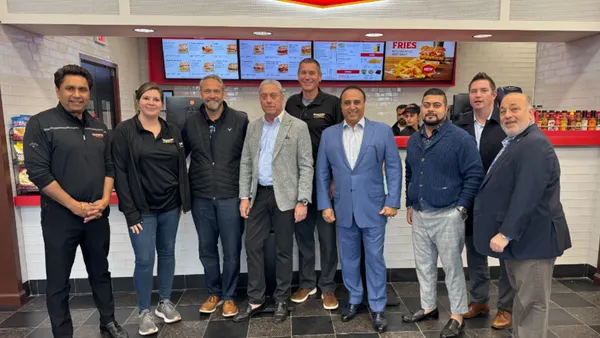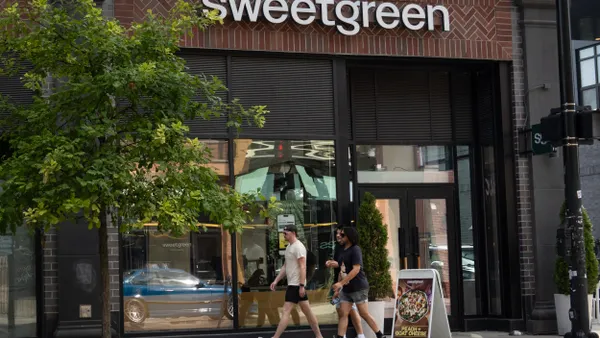Dive Brief:
- Starbucks announced last week it will open or remodel 100 stores in low-income neighborhoods by 2025, an 85-store increase from its initial 2015 commitment. The expansion into "Opportunity Zones" is in partnership with United Way and upcoming locations are planned for Prince George's County, Maryland; Los Angeles; and the Anacostia neighborhood of Washington, D.C.
- The announcement comes five years after the company launched its Community Store Program Initiative, which is aimed at providing economic opportunities in areas with high youth unemployment, low median household incomes and population stability, according to the company.
- "We believe it is our role and responsibility to partner with those in the communities we serve to help make a positive economic and social impact," John Kelly, Starbucks' EVP of public affairs, said in a release.
Dive Insight:
Starbucks must like what it sees from its Community Store Program Initiative to accelerate openings. The company notes that the 15 open stores have created more than 300 jobs in communities like Chicago; Baltimore; Ferguson, Missouri; and Jonesboro, Georgia, and more than $59 million in indirect economic development.
Starbucks certainly has the economies of scale to experiment with new and different types of models, and doing so in low-income neighborhoods with the promise of not only creating jobs but also programming, such as job training classes and mentoring through its United Way partnership, is likely to generate positive PR at the very least, and a new loyalty base at best.
That's not to say there aren't any challenges, however. Starbucks isn't exactly the cheapest coffee shop on the block. As Kelly told the Associated Press, these locations have the same menu as traditional Starbucks locations with nominal pricing changes. A grande latte in the Ferguson store costs $4.95, versus the traditional store six miles away charging $5.25, the AP reports. But, Kelly adds these stores are profitable, which means Starbucks has pricing leverage to cater to disparate markets.
There could also be some distrust from consumers following a 2018 incident in which a store manager in Philadelphia called police leading to the arrest of two black men. There could also be suspicion from those who consider Starbucks to be a higher-end coffee store paying lip service, or even a company forcing gentrification. Also, the company has opened stores in urban markets before, in 1998, and struggled.
Not many chains have tried to do this type of program, though Panera tried a pay-what-you-can model in 2010 that closed because it didn't generate a profit. In other words, there are no case studies on how to make sure this type of program is successful.
But Starbucks has long balanced profits and social responsibility, and there's little reason to believe it won't continue doing so, especially considering 85 stores is a small sample of Starbucks' overall domestic footprint, which exceeded 14,600 locations in 2018, according to Technomic data. Additionally, the company is intensely focused on a number of other models as well, including its high-end Roasteries and its pickup-only store. This initiative simply adds to that diversified portfolio, a strategy that can maximize consumer base.









